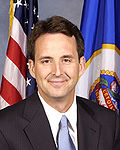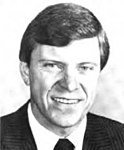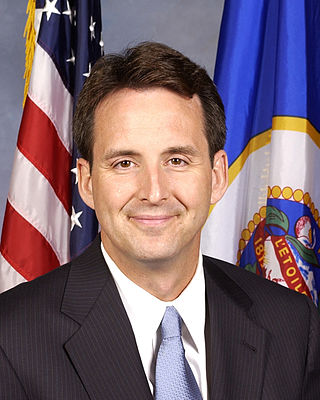
Timothy James Pawlenty is an American attorney, businessman, and politician who served as the 39th governor of Minnesota from 2003 to 2011. A member of the Republican Party, Pawlenty served in the Minnesota House of Representatives from 1993 to 2003, and as House Majority Leader from 1999 to 2003. He unsuccessfully ran for the Republican presidential nomination in the 2012 presidential election.

The Republican Party of Minnesota is the state affiliate of the Republican Party in Minnesota and the oldest active political party in the state. Founded in 1855, the party controls four of Minnesota's eight congressional House seats. The last Republican governor of the state was Tim Pawlenty, who served from 2003 to 2011. The party's headquarters is located in Edina, Minnesota and the current chairman is David Hann. Starting in 2023 and as a result of the 2022 elections, the Republican Party of Minnesota does not have substantial power over the state, holding no statewide executive offices, no U.S. Senate seats, and minorities in the state legislatures.

Timothy Joseph Penny is an American author, musician, and former politician from Minnesota. Penny was a Democratic-Farmer-Labor member of the United States House of Representatives, 1983–1995, representing Minnesota's 1st congressional district in the 98th, 99th, 100th, 101st, 102nd and 103rd congresses.

The 2006 Minnesota gubernatorial election took place on November 7, 2006. Incumbent Tim Pawlenty was endorsed by the state Republican convention on June 2, 2006, while the state Democratic–Farmer–Labor convention endorsed Mike Hatch on June 10, 2006. The party primaries took place on September 12, 2006, with Hatch defeating DFL challengers Becky Lourey and Ole Savior and incumbent Pawlenty defeating Sue Jeffers. In the November 7 general election, Pawlenty received a plurality of the votes, defeating Hatch by a margin of 1%. As a result, this election was the closest race of the 2006 gubernatorial election cycle.
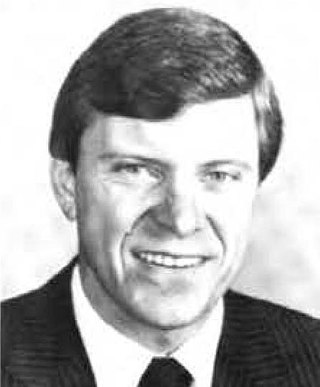
Roger Moe is an American politician who served as a member and majority leader of the Minnesota Senate. He was the Democratic nominee for governor in the 2002 Minnesota gubernatorial election.
Judith H. Dutcher is an American attorney and former politician who served as the Minnesota State Auditor from 1995 to 2003 as both a Republican and Democrat (DFL). She was the first woman to serve as Minnesota State Auditor.
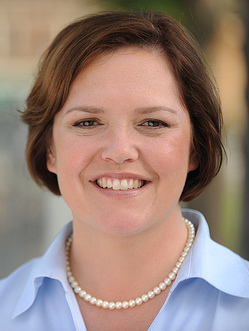
Margaret Anderson Kelliher is an American politician, Director of the Minneapolis Department of Public Works, former Commissioner of the Minnesota Department of Transportation, and a former member of the Minnesota House of Representatives. A member of the Minnesota Democratic–Farmer–Labor Party, she represented District 60A, which includes portions of the city of Minneapolis in Hennepin County, located in the Twin Cities metropolitan area. First elected in 1999, she served until 2011, also serving as the Speaker from 2007 to 2011. She is the second woman to hold the position of House speaker. She was an unsuccessful candidate for the DFL nomination for Governor of Minnesota in the 2010 gubernatorial election, losing to former Senator Mark Dayton. Anderson left the Minnesota House of Representatives at the conclusion of her term in 2011 and re-entered politics when she ran for the DFL nomination to the U.S. House of Representatives in Minnesota's 5th congressional district in 2018, losing to Ilhan Omar. Since 2019 Kelliher, has worked in transportation management roles for the government, first as Commissioner of MnDOT, and later as Director of Public Works for the city of Minneapolis.
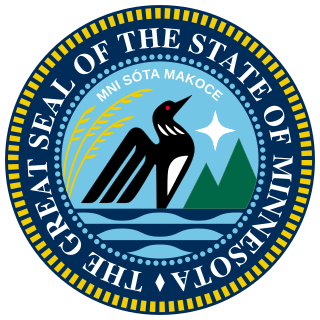
Minnesota is known for a politically active citizenry, with populism being a longstanding force among the state's political parties. Minnesota has consistently high voter turnout; in the 2008 U.S. presidential election, 77.8% of eligible Minnesotans voted – the highest percentage of any U.S. state or territory – versus the national average of 61.7%. This was due in part to its same day voter registration laws; previously unregistered voters can register on election day, at their polls, with evidence of residency.

The 2008 United States Senate election in Minnesota took place on November 4, 2008. After a legal battle lasting over eight months, the Democratic–Farmer–Labor Party (DFL) candidate, Al Franken, defeated Republican incumbent Norm Coleman in one of the closest elections in the history of the Senate, with Coleman's Senate predecessor Dean Barkley taking third place. Franken took his oath of office on July 7, 2009, more than half a year after the end of Coleman's term on January 3, 2009.
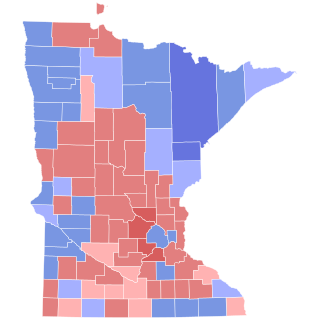
The 2002 United States Senate election in Minnesota took place on November 5, 2002. Incumbent Senator Paul Wellstone was running for a third term but died in a plane crash eleven days before the election. The Democratic–Farmer–Labor Party (DFL) quickly chose former Vice President and 1984 presidential nominee Walter Mondale to replace Wellstone on the ballot. Mondale had previously held the seat from 1964 to 1976, resigning to assume the vice presidency. He narrowly lost to Republican Norm Coleman, the former mayor of Saint Paul. The day before the election, Governor Jesse Ventura appointed the 1996 Independence Party candidate, Dean Barkley, to serve the remainder of Wellstone's term.

The 2000 United States Senate election in Minnesota was held on November 7, 2000, to select a U.S. senator from the state of Minnesota. The race pitted incumbent Republican Senator Rod Grams against former Minnesota State Auditor Mark Dayton. Dayton won with 48.83% of the vote to Grams's 43.29%. Dayton declined to run for reelection in 2006 and ran successfully in 2010 and 2014 for governor of Minnesota. He was succeeded in the Senate by Amy Klobuchar, who has held the seat ever since. Upon Dayton's swearing in, Democrats held both of Minnesota's U.S. Senate seats for the first time since 1978. As of 2024, this is the last time that a man won the Class 1 Senate seat in Minnesota.
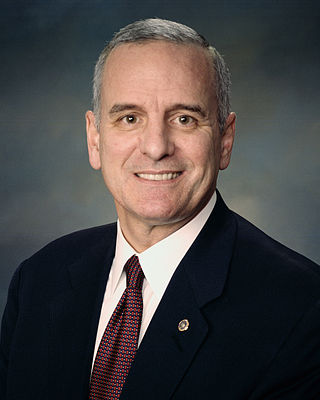
The 2010 Minnesota gubernatorial election was held on Tuesday, November 2, 2010 to elect the 40th Governor of the U.S. state of Minnesota for a four-year term to begin in January 2011. The general election was contested by the major party candidates State Representative Tom Emmer (R–Delano), former U.S. Senator Mark Dayton (DFL), and Independence Party candidate Tom Horner. After a very close race, Dayton was elected governor. Emmer would be elected to the United States House of Representatives four years later.

The 1994 Minnesota gubernatorial election took place on November 8, 1994, in the midst of that year's Republican Revolution. Incumbent Republican Arne Carlson easily won re-election over Democrat–Farmer–Labor state senator John Marty.

The 2014 Minnesota gubernatorial election took place on November 4, 2014, to elect the governor of Minnesota concurrently with the election to Minnesota's Class II U.S. Senate seat, as well as other elections to the United States Senate in other states and elections to the United States House of Representatives and various state and local elections.

The 1976 United States presidential election in Minnesota took place on November 2, 1976 as part of the 1976 United States presidential election. Voters chose ten electors, or representatives to the Electoral College, who voted for president and vice president.
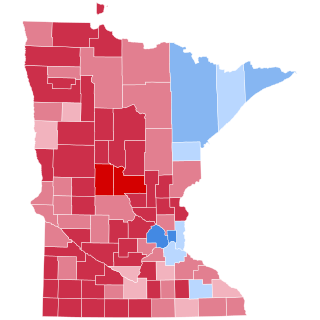
The 2016 United States presidential election in Minnesota was held on Tuesday, November 8, 2016, as part of the 2016 United States presidential election in which all 50 states plus the District of Columbia participated. Minnesota voters chose electors to represent them in the Electoral College via a popular vote, pitting the Republican Party's nominee, businessman Donald Trump, and running mate Indiana Governor Mike Pence against Democratic Party nominee, former Secretary of State Hillary Clinton, and her running mate Virginia Senator Tim Kaine. Minnesota has ten electoral votes in the Electoral College.
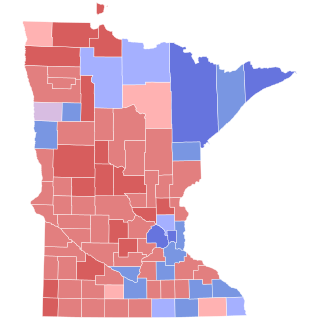
The 2018 Minnesota gubernatorial election took place on November 6, to elect the 41st Governor of Minnesota as incumbent Democratic governor Mark Dayton chose not to run for re-election for a third term. The Democratic nominee was congressman Tim Walz from Minnesota's 1st congressional district while the Republicans nominated Hennepin County commissioner Jeff Johnson. The Independence Party of Minnesota didn't field a candidate for the first time since 1994. Going into the election the polls showed Walz ahead and the race was characterized as lean or likely DFL.
A general election was held in the U.S. state of Minnesota on November 6, 2018. All of Minnesota's executive officers were up for election as well as all the seats in the Minnesota House of Representatives, several judicial seats, two United States Senate seats, Minnesota's eight seats in the United States House of Representatives, and several seats for local offices. Special elections were also held for a Minnesota Senate seat and Minnesota's Class 2 U.S. Senate seat. A primary election to nominate Republican and Democratic–Farmer–Labor (DFL) candidates and several judicial and local primary elections were held on August 14, 2018.

The 2018 United States Senate special election in Minnesota took place on November 6, 2018, to elect a United States senator from Minnesota to replace incumbent Democratic senator Al Franken until the regular expiration of the term on January 3, 2021. Facing multiple accusations of sexual misconduct, Franken announced on December 7, 2017, that he would resign effective January 2, 2018. Governor Mark Dayton appointed Franken's successor, Tina Smith, on December 13, 2017, and she ran in the special election. This election coincided with a regularly scheduled U.S. Senate election for the Class 1 Senate seat, U.S. House elections, a gubernatorial election, State House elections, and other elections.

The 2022 Minnesota gubernatorial election took place on November 8, 2022, to elect the governor of Minnesota. Incumbent Democratic (DFL) Governor Tim Walz defeated the Republican nominee, former state senator Scott Jensen, winning a second term.

